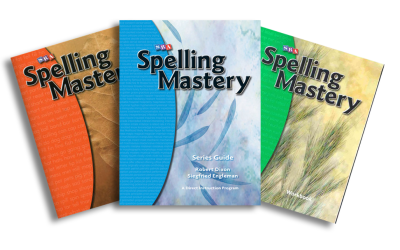In the dynamic and diverse landscape of Australian education, one of the most effective teaching methodologies that has been gaining attention is eExplicit dDirect iInstruction (EDI). For educators who are eager to make a meaningful and measurable impact in their classrooms, EDI provides a structured and transparent approach that addresses all aspects of student learning, from establishing clear pathways at the outset to refining outcomes at the end.
Implementing EDI goes beyond following a set of guidelines; it involves transforming the teaching process to ensure that every opportunity for student comprehension and retention is fully explored. This comprehensive guide is designed to help you understand EDI principles and empower you to incorporate them effectively into your everyday pedagogy.
The Pillars of Explicit Direct Instruction
Before we get down to the nitty-gritty of implementing EDI, it’s essential to understand its core components. At its heart, EDI is a teacher-driven approach that emphasises clarity, engagement, and mastery of content through structured lesson design. Here’s a breakdown of the methodology’s key elements:
- Setting Clear Learning Objectives: Define precise and measurable learning goals for each lesson.
- Beginning with a Hook: Engage students’ interest from the start with a compelling introduction linked to the lesson theme.
- Modelling and Demonstration: Explicitly teach the skills or concepts, providing a visible thought process.
- Guided Practise: Facilitate student learning with structured, teacher-led activities.
- Checking for Understanding: Assess students’ grasp of the lesson through various formative assessment techniques.
- Independent Practise: Provide opportunities for students to work through tasks on their own.
- Feedback and Correction: Offer timely and specific feedback to advance student understanding and self-correction.
- Closure and Recap: Conclude lessons by summarising key points and revisiting learning objectives.
- Continuous Improvement: Regularly reflect on and adjust instructional strategies based on student feedback and performance data.
The Roadmap to Clarity: A Step-by-Step Handbook for Educators
Step 1: Setting Clear Learning Objectives
The first step in EDI is perhaps the most crucial – setting clear and specific learning objectives. Without a destination, students’ learning can become aimless. To set these objectives effectively:
- collaborate with curricular specialists to ensure alignment with educational standards and content accuracy
- phrase objectives to be understandable and engaging for students
- integrate verbs from the Revised Bloom’s Taxonomy to ensure objectives are actionable (e.g., create, analyse, solve)
- display objectives prominently in the classroom and revisit them at the end of the lesson.
Step 2: Beginning with a Hook
An effective hook can set the tone for a compelling learning experience. To capture students’ attention:
- make the hook relevant to their lives or tied to real-world applications
- keep it brief but thought-provoking
- use multimedia tools to add variety and appeal to the lesson intro.
Step 3: Modelling and Demonstration
The ‘I do it, we do it, you do it’ approach is key to EDI. To model effectively:
- plan out a clear sequential demonstration of the skill or concept
- build in time to work along as a class
- use think-alouds to verbalise the decision-making process during the model
- provide students opportunity to practise on their own the skill just taght
- ensure that every step is visible and paused over for student reflection.
Step 4: Guided Practise
Guided practise serves as a vital bridge between the demonstration and independent work:
- Structure-guided activities that gradually release responsibility to the students.
- Use strategic questioning to prompt students and check their understanding.
- Keep the pace brisk to maintain student engagement.
Step 5: Checking for Understanding
Regular check-ins ensure you are teaching students, not just teaching lessons. To check for understanding:
- employ various formative assessment strategies throughout the lesson
- use technology to conduct quick polls, surveys, or quizzes
- encourage peer collaboration for discussions and joint problem-solving.
Step 6: Independent Practise
Independent practise allows students to apply what they’ve learned. When giving independent tasks:
- offer different levels of challenge to cater to diverse learning needs
- provide clear instructions and supportive materials for students to refer to during practise
- scaffold the independent work, starting with simpler tasks and moving towards the more complex ones.
Step 7: Feedback and Correction
The effectiveness of feedback is in its specificity. To make feedback count:
- use rubrics, models, and exemplars to convey performance expectations
- leverage self-assessment to induce reflection
- ensure that feedback is an ongoing, two-way conversation, not a one-time declaration.
Step 8: Closure and Recap
A strong wrapping-up can reinforce learning and provide a sense of accomplishment. During closure:
- summarise key points using visuals or summaries
- provide students with a chance to articulate their understanding in their own words
- pose open-ended questions that challenge students to think about possible extensions of the lesson content.
Step 9: Continuous Improvement
The EDI process is a continuous loop, not a straight line. To ensure that each lesson builds on the last:
- maintain a reflective teaching journal to capture what worked and what didn’t
- regularly review student performance data to inform instructional decisions
- participate in professional development opportunities to stay current with best practices in teaching and learning.
The EDI Toolbox: Practical Strategies for Australian Classrooms
For the Australian educator, every tool in the teaching toolkit needs to be tailored to the specific needs of the students and the curriculum. Here are some practical strategies that can help bring EDI principles to life in the classroom:
Strategy 1: Harness the Power of Prior Knowledge
Activate students’ prior knowledge to ensure that new information sticks:
- Use KWL charts to identify what students know, want to know, and have learned.
- Encourage class discussions to share and clarify collective prior knowledge.
- Relate new concepts to students’ cultural experiences and existing schemas.
Strategy 2: Encourage Individual and Cooperative Learning
Foster environments that support independent and collaborative learning.
- Provide opportunities for students to explore topics that interest them personally, promoting engagement and intrinsic motivation.
- Assign group tasks that require varying levels of skill and knowledge, ensuring each student can contribute meaningfully.
- Teach explicitly the skills students need to work effectively in groups, such as communication and collaboration.
Strategy 3: Leverage Technology to Enhance Instruction
Integrate technology in a purposeful way to support and extend learning.
- Use educational software and apps to provide additional practise and opportunities for remediation or enrichment.
- Incorporate digital presentations and multimedia to provide alternative explanations and examples.
- Utilise online collaboration tools to facilitate group work and to encourage participation.
Strategy 4: Differentiate Instruction to Meet Diverse Learning Needs
Adapt teaching methods to address the varied learning needs of your students.
- Group students by readiness, interest, or learning profile to offer targeted instruction.
- Provide choices in assignments and learning activities to accommodate different learning styles and preferences.
- Utilise learning contracts or menus that allow students to select tasks that align with their strengths and areas for growth.
Strategy 5: Build a Culture of Consistent, Positive Discipline
Establish clear behavioural expectations and consequences to create a positive learning environment.
- Collaborate with students to develop class rules and routines.
- Use positive reinforcement to recognise and celebrate desired behaviours.
- Confront misbehaviour promptly and consistently, focusing on consequences that are logical and restorative.
Strategy 6: Foster Inquiry-Based Learning
Follow on from lessons taught to Eencourage exploration and critical thinking through inquiry-based activities.
- Build on learning by Developdeveloping essential questions that frame the inquiry and guide learning.
- Structure research projects to require students to seek, sift, and synthesise information independently.
- Provide opportunities for students to present their findings and defend their conclusions.
Frequently Asked Questions about Explicit Direct Instruction
How is EDI different from traditional, teacher-centred instruction?
While both traditional instruction and EDI are led by the teacher, EDI emphasises clarity, directness, and gradual release of responsibility to students. It also features explicit strategy instruction and frequent checking for understanding to ensure student mastery.
Is EDI a one-size-fits-all approach?
Yes, EDI can be effective from early childhood through adult education. The level of complexity and the specific strategies used may vary, but the core principles remain the same.
Does implementing EDI mean giving up innovative teaching methods?
Not at all. EDI is compatible with many other teaching methods and can actually enhance the effectiveness of innovative approaches by ensuring that the connection between teacher and student is clear and direct.
How can teachers balance the structured nature of EDI with creativity in the classroom?
The beauty of EDI is that it provides a solid structure within which creativity can flourish. Teachers can use their creative energies to design engaging hooks, craft model lessons that inspire students, and design assessments that align with learning objectives in interesting ways.
Conclusion
EDI presents a practical means for Australian educators to achieve remarkable learning outcomes. By honing in on the core tenets of EDI and integrating them into every facet of teaching, educators can provide their students with a structured, engaging, and immensely beneficial learning experience. Remember, the road to EDI excellence is a continuous one, marked by hands-on experiences, reflective practice, and a firm commitment to student success. With this guide as your compass, you’re well on your way to fostering an environment where learning is not just received but genuinely understood and applied.



